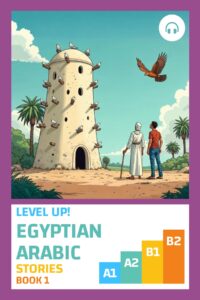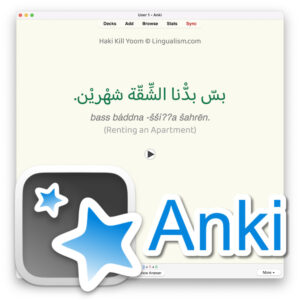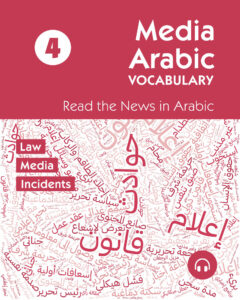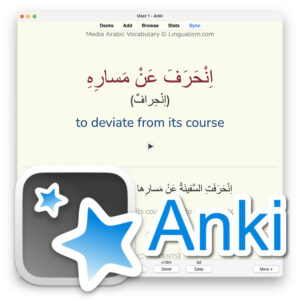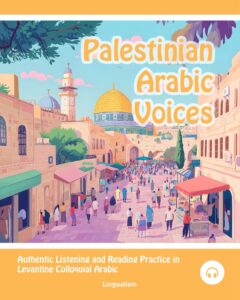Table of Contents
Demystifying Arabic Language Learning
Arabic often gets a bad rap for being one of the hardest languages to learn. But is this perception accurate? In this blog post, we’ll break down the complexities, compare it with other languages, and offer practical insights to help you decide if learning Arabic is right for you.
Arabic vs. Other Commonly Learned Languages
When it comes to language difficulty, the Foreign Service Institute (FSI) provides a helpful benchmark. They rank languages based on the estimated time it takes for an English speaker to achieve proficiency. According to FSI, Arabic falls into Category IV, meaning it’s considered quite challenging. But how does it stack up against other languages?
Spanish and French, both Category I languages, are notably easier for English speakers. These languages share many similarities with English, making them more accessible. On the other hand, Chinese and Japanese, like Arabic, are also in the higher difficulty categories, primarily due to their complex writing systems and tonal nature.
Arabic’s ranking is primarily due to its script, grammar, and the phenomenon of diglossia. However, this doesn’t mean it’s insurmountable—many students have successfully learned Arabic and enjoyed the process.
Unique Features of Arabic
Despite being a Semitic language, Arabic shares several similarities with European languages, such as gender agreement, verb conjugations, and verb tenses, making it more familiar to learners with experience in European languages. For instance, Arabic nouns and adjectives must agree in gender and number, much like in French or Spanish. Additionally, Arabic verb conjugations follow patterns that can be compared to those found in Italian or German. Furthermore, the concept of verb tenses in Arabic, including past, present, and future, is something learners from European language backgrounds may find easier to grasp. These similarities can provide a helpful bridge for those transitioning from learning European languages to studying Arabic.
No Tonal Variations
Unlike languages such as Mandarin Chinese, Arabic does not use tones to distinguish meaning between words, making pronunciation more straightforward for English speakers. This means that you don’t have to worry about changing the pitch of your voice to convey different meanings, which can be a challenging aspect for learners of tonal languages. Instead, Arabic relies on vowel and consonant sounds to differentiate words and meanings. This absence of tonal variations simplifies one aspect of language acquisition, allowing learners to focus more on mastering the alphabet, vocabulary, and grammar.
Irregular Plurals
Arabic language learners often encounter irregular plurals, which don’t follow a predictable pattern. While memorization is essential for mastering many of these plurals, there are common patterns that learners will gradually become familiar with through consistent practice and exposure. These patterns, once recognized, can make the process of learning irregular plurals less daunting and more intuitive.
Complex Verb Conjugations
Although Arabic has complex verb conjugations, it has very few truly irregular verbs. The verbs follow specific patterns, making conjugating them simpler than in many European languages. For instance, once you learn the root forms and the corresponding patterns, you can apply these rules to most verbs. This systematic approach helps reduce the overall complexity and makes it easier for learners to grasp the structure of the language. Furthermore, understanding these patterns can significantly speed up learning, allowing for more efficient communication and comprehension.
Gender
Like many European languages, Arabic assigns masculine and feminine genders to nouns. The gender of a word is typically indicated by its ending. For example, many feminine nouns end in ـة -a, while masculine nouns do not have a specific ending to denote gender. Understanding the gender of a word is crucial as it affects grammar agreements, such as adjective-noun pairing and verb conjugations. This concept adds to the richness and complexity of the Arabic language, making it essential for learners to grasp early on.
The Issue of Diglossia in Arabic
One unique aspect of Arabic is diglossia—the existence of two distinct forms of the language. Modern Standard Arabic (MSA) is used in formal settings, media, and literature, while various colloquial dialects are spoken in everyday life across different regions.
Navigating between MSA and regional dialects can be challenging. Learners often find it tricky to decide which form to focus on, and switching between the two can be daunting. However, understanding the context in which each is used can make the learning process more manageable.
MSA is essential for reading newspapers and official documents and understanding news broadcasts. In contrast, dialects are more practical for conversational fluency and daily interactions.
Choosing Which Form to Learn First
When starting to learn Arabic, it’s essential to consider your goals and the contexts in which you plan to use the language. If your primary objective is to engage with Arabic media and literature or pursue academic studies, beginning with Modern Standard Arabic (MSA) would be highly beneficial. MSA provides the foundation needed for understanding written and formal spoken Arabic, serving as a bridge to more specialized texts and scholarly work.
On the other hand, learning a specific colloquial dialect might be more practical if you focus on everyday communication and building relationships within Arabic-speaking communities. Dialects such as Egyptian Arabic, Levantine Arabic, or Tunisian Arabic can open doors to more informal conversations and help you integrate into local cultures. It’s worth noting that MSA knowledge can still be invaluable as it can enhance your comprehension when dialectal variations become complex or when interacting with people from different regions.
Ultimately, many successful Arabic learners find a balance between MSA and a chosen dialect, integrating components of both forms into their studies. This approach not only broadens one’s linguistic capability but also deepens cultural understanding and appreciation.
Guidance for New Arabic Language Learners
While Arabic’s complexity may seem intimidating, it’s essential to dispel some myths:
- You don’t need to master both MSA and dialects immediately. Start with one and gradually incorporate the other as you become more comfortable. Focusing on one form first is perfectly acceptable to avoid feeling overwhelmed. Many learners begin with Modern Standard Arabic (MSA) to build a foundation. Once you are confident in your understanding of MSA, you can start learning a dialect that aligns with your interests or needs. For example, if you plan to travel to Egypt, familiarizing yourself with Egyptian Arabic will be extremely beneficial. This step-by-step approach ensures a smoother learning process and prevents burnout.
- The alphabet isn’t as hard as it looks. With just 28 letters, many of which have familiar sounds, you’ll find reading and writing easier than expected. Beginners often find the Arabic script daunting at first glance, but with focused practice, you will quickly recognize and memorize the letters. You will notice that certain letters share the same base shape and differ slightly based on their position in a word, which makes them easier to learn. Tools such as writing exercises, flashcards, and apps can be very effective in mastering the Arabic alphabet.
- Arabic pronunciation can be mastered with time and practice. Many new learners worry about correctly pronouncing Arabic sounds, especially those that do not exist in their native language. Common sounds like the Arabic “م” (m) and “ن” (n) are usually straightforward for most learners. However, more challenging sounds such as “ح” (ḥ), “ع” (ʿ), and “ق” (q) can be difficult to master. With consistent practice and patience, you can develop a good command of Arabic phonetics. Make use of language learning resources such as online courses, language exchange partners, and audio recordings to improve your pronunciation skills. Immersing yourself in Arabic media, such as music, TV shows, and podcasts, can also enhance your listening and speaking abilities. Remember, perfection is not the goal; effective communication is.
- Vocabulary building is key. Start with common, everyday words and phrases to quickly build a functional vocabulary. As you progress, incorporate more specialized terms based on your interests or professional needs. Using flashcards, spaced repetition systems, and interactive language apps can significantly aid in retaining new words. Additionally, practice using new vocabulary in sentences to reinforce learning and improve recall.
By setting realistic goals and maintaining a consistent study routine, you will find that learning Arabic becomes an achievable and rewarding endeavor.
Comparison of MSA and Dialects
Modern Standard Arabic (MSA)
MSA serves as the standardized, formal variant of Arabic. It’s used in written communication, formal speeches, and media. MSA’s structure includes case endings, which can be tricky for beginners but offer a sense of precision and clarity.
Arabic Dialects
Arabic dialects vary significantly from one region to another. They’re used in everyday conversations and are generally simpler than MSA because they lack case endings. This makes dialects an excellent starting point for learners focused on practical communication.
For instance, Egyptian Arabic is widely understood due to Egypt’s influential media industry, making it a popular choice for learners. Levantine and Gulf Arabic are other dialects with unique features and widespread use.
Resources and Support for Learning Arabic
Learning Arabic doesn’t have to be a solitary journey. Enter Lingualism—a platform dedicated to making Arabic learning accessible and enjoyable. Lingualism offers a range of resources, including:
- PDF eBooks featuring comprehensive language guides.
- Anki flashcards for effective vocabulary retention.
- Paperback books (available on Amazon) for those who prefer a traditional approach.
These materials are designed to address the challenges of learning Arabic by providing user-friendly content, practical language usage, and cultural insights.
Conclusion
Learning Arabic might seem daunting at first, but it’s entirely achievable with the right approach and resources. We’ve explored how Arabic compares to other languages, the issue of diglossia, and the differences between MSA and dialects. The rewards of learning Arabic are vast—cognitive benefits, cultural appreciation, and professional opportunities.
Don’t be deterred by the myths surrounding Arabic learning. Start your language journey today with the support of Lingualism’s resources, and take the first step towards becoming proficient in one of the world’s most fascinating languages.


